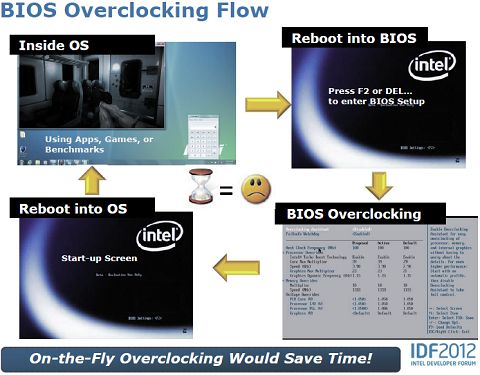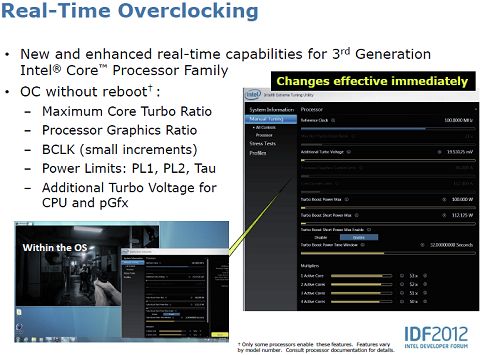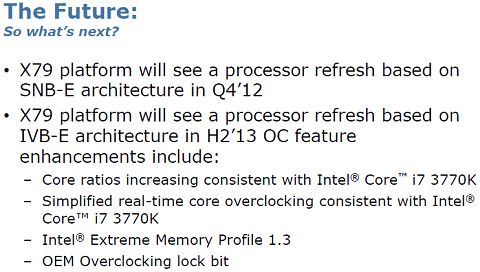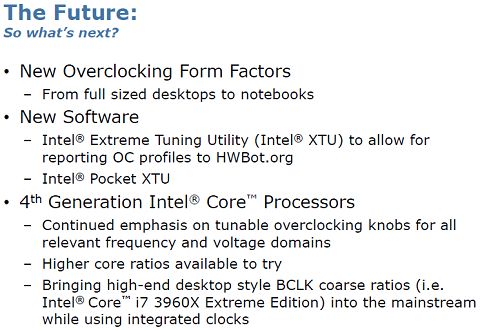Intel Haswell CPUs to Bring Revolutionary New Overclocking Features!
At IDF this year, Intel reaffirmed its commitment to the high performance enthusiast desktop PC with an extensive section on overclocking – and over 70 presentation slides. In fact, Intel is fully embracing the enthusiast overclocking culture that’s grown up around its products and aims to help users achieve the best and most stable overclocks using its hardware, which is fantastic to see. Intel explained in detail how to overclock Sandy Bridge (including SB-E) and Ivy Brdge CPUs, but the best part by far is what the 4th generation Haswell parts will bring to the table.

Normally, rebooting, diving into the BIOS to make overclocking adjustments, rebooting and testing, then rebooting again… is all part of what overclocking is about, which is time consuming and laborious. Since today’s 3rd generation Ivy Bridge processors however, it has been possible to change the CPU and iGP clock ratios in realtime from within Windows, as well as small changes to BCLK of around 7% up or down. However, significant improvements to BCLK adjustments will appear in Haswell.

BCLK will still be locked to the other components of the system such as the SATA ports and PCI Express bus, limiting the amount of adjustment possible though. However, high end overclocking features that allow greater BCLK tuning and which currently only appear in the top end, pricey SB-E LGA 2011 platform will be present in the mainstream Haswell desktop and laptop parts too. Significantly, the BCLK coarse ratio adjustments of 1.00, 1.25 and 1.67 which allow BCLK to change without unwanted overclocking of those SATA ports and other components, will feature in the new Haswell mainstream parts. This will help with clock speed granularity, since simply adjusting the multipliers along with limited BCLK as happens now on Sandy Bridge and Ivy Bridge CPUs leads to large clock speed jumps, preventing optimum fine tuning of system performance.
There will be other great overclocking features too. Intel’s Extreme Tuning Utility will have a portable version called Pocket XTU that will allow a user to adjust those clock speeds directly while a game is running, no disruption required. It achieves this by being run from another computer or even a smartphone and controlling the target computer over the network. This is some serious convenience and will help greatly with performance benchmarking in games. Even overclocking on laptops is to be officially supported, with Intel sanctioning the use of overclocking features such as turbo buttons on the system case on top of the improvements explained above.
The top end X79 enthusiast platform will see refreshes including a processor refresh based on the SNB-E architecture in Q4 2012 and an IVB-E refresh in H2 2013 as shown below:

Finally, in an IDF first, Intel invited overclocking expert Charles Wirth “Fugger” of XtremeSystems to give a live demo on overclocking the i7-3770K CPU using LN2, showing exactly how to extract maximum performance from such a system. Using LN2 provides for maximum cooling, allowing hardcore overclockers to aim for overclocking records with their hardware, if only fleetingly until the LN2 runs out. This looks like an exciting time for the enthusiast desktop!


Comments are closed.